I love experimenting in the darkroom and recently sought out a brown tone developer. Photographers Formulary had a similar developer to an older Ansco formula which was supposed to have been a brown toned developer on certain older papers like Kodak Ektalure which is no longer made. So I ordered some PF106 (link) to see if it would work on modern normal and/or warm tone papers. I also took the opportunity to try a new paper Bergger Variable CB Warm Glossy fiber based. I had hoped it would have the magic stuff that would allow the developer to actually print a brown tone. Also tested was my old standards Ilford MGFB Classic and Ilford MGFB Warm Tone.
The result: None of the papers printed with brown tones. All were neutral greys. But I did discover a few things along the journey.
Setup: I chose a very thin 4×5 negative recently shot, processed in Pyrocat HD which was under exposed and slightly over processed. I knew it had some black areas so I could easily make test strips. The enlarger is a Beseler 45MX with a non-branded cold light head. I used an Ilford Grade 2 filter under the lens for all exposures and tests. I selected f22 on the 135 Schneider lens at about 8″ above the speed frame to create an 8×10 image.
Chemistry: Ethol LPD working strength developer was mixed fresh at 330ml + 670ml water (roughly 1:2), stock solution was a few months old. The PF106 stock was made fresh yesterday and diluted 125ml+875ml (1+7). Kodak indicator stop and Ilford rapid fix 1+4 were fresh as well. Developer time for LPD was 2 minutes vs developer time for PF106 was 2:30. 30 seconds Stop, 1 minute in the Fixer, 15-30minute pre-soak and final 30 minute wash.
Exposure: Initial test strips were run to get me in the ball park for final exposure time usually with 2-3 second spacing. What is surprising is how much longer the required exposure was for the warm tone papers. Classic being the shortest and Bergger VCB being the longest. The PF106 developer also required a longer exposure time than LPD developer. The table below shows the exposure times for max black within the image.
| Paper | LPD | PF106 | Notes |
|---|---|---|---|
| Ilford MGFB Classic | 6s | 7s | A slightly longer exposure needed to achieve black in the PF106 |
| Ilford MGFB Warm Tone | 21s | 26s | Longer exposures needed for warm papers to achieve blacks. Similar contrast and color tone to MGFB Classic. |
| Bergger VCB Warm Tone | 22s | 26s | Similar exposures to MGFB WT. Slightly warmer, less glossy |
Other Observations:
Image began appearing within 20-30 seconds in LPD, but did not appear in PF106 until around 50-60 seconds and was slower to come in fully.
I tried one longer development test in PF106 at 5 minutes and the image darkened much more than the 2:30 image, but did not turn brown or even warmer. This could lead to experimentation with shorter exposures and longer development or visa-versa.
Color tone of all three papers was about the same when adjusted for increased exposures, but the Bergger paper is slightly warmer than even MGFB WT but not softer or less contrasty. The Bergger paper base reflects white but the glossy black is not as pronounced as Ilford once dry. Mid tones are a bit softer in the warm tone papers as expected.
Even with a very thin negative I was able to get decent exposure times on the warm tone papers. The slower PF106 developer could be used for tough negatives when I need more working time during exposure.
It was hot in my darkroom today, 80-82 degrees so the chemistry warmed up through out the day but remained active and did not seem to vary in quality. Neither showed signs of diminishing or increasing activity between 70 and 80 degrees.
Cost: One Liter of PF106 costs about $25 shipped and only has a 6 week shelf life. One gallon of Ethol LPD is less than $20 and stock solution will last up to 2 years in my experience. Bergger paper is slightly more expensive than Ilford warm tone and is a slightly thicker base 280 gsm vs 250 gsm.
And as a radical step I put an exposed image in LPD for about 45 seconds then stuck it in the PF106 for another 30 seconds. Surprisingly the image was very cold and bluish. I did not finish processing this paper but note it as something to try again later.
Update: I tried the Bergger paper with PF106 diluted at 1:15. Still no brown tone. The working developer speed was slower as expected requiring 3-4 minutes for full development. I also tried Ilford Multigrade Art 300 which is a warmtone paper heavy textured fiber based paper that has similar feel of a watercolor paper. No brown tone but it does produce a full grey scale matte finished image. The texture of the Art paper is still there but not as pronounced as I had before with LPD development (more experimentation required to verify). While not glossy, the Art paper has a sparkle to it.
| Bergger VCB Warm Tone | 30s | 1:15 Dilution – slightly longer exposure needed and longer processing times. | |
| Ilford MG Art 300 Warm Tone | 30s | Similar exposures to Bergger but finish is matte. |
Next Steps:
Toning tests with Selenium and possibly Thiourea to see which gives me the most interesting brown tones on the Bergger paper. And to determine if the PF106 has any tonal differences than the LPD developed prints. See https://www.searing.photography/testing-lpd-vs-pf106-part-ii/.
Further experimentation with Split Grade printing on the Warm tone papers to compare how they react at different times for min/max contrast.
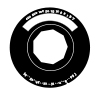
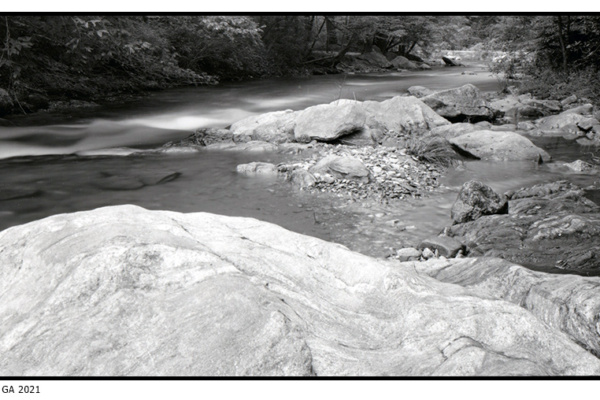
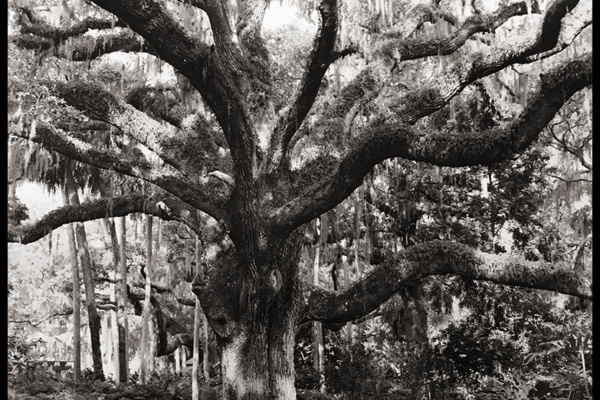
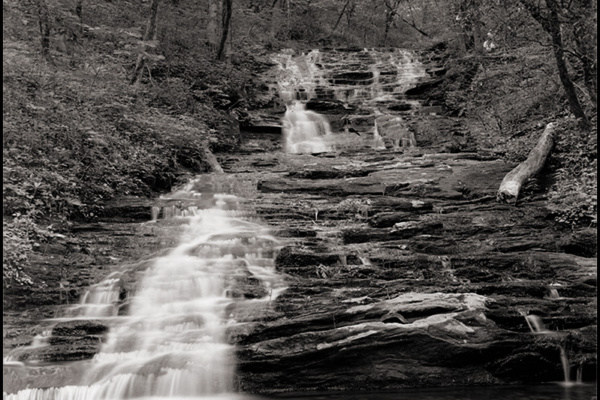
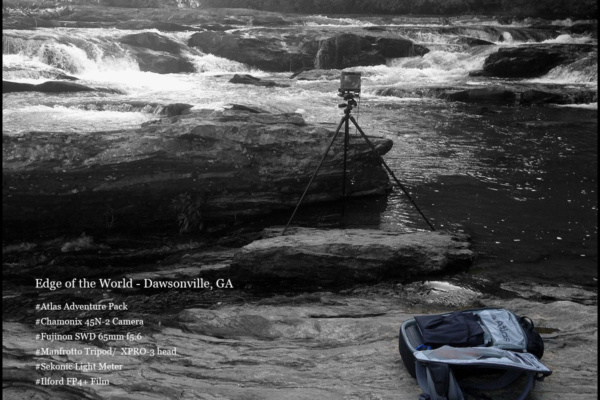
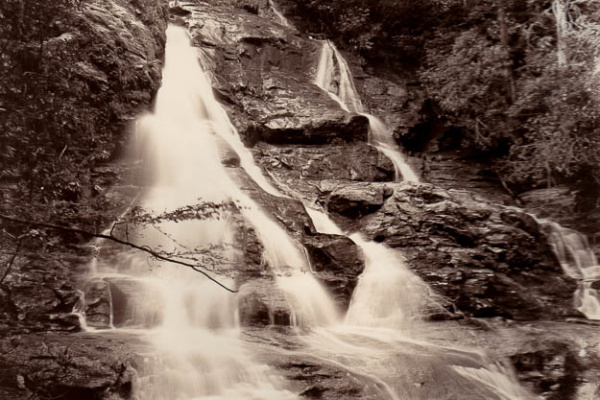
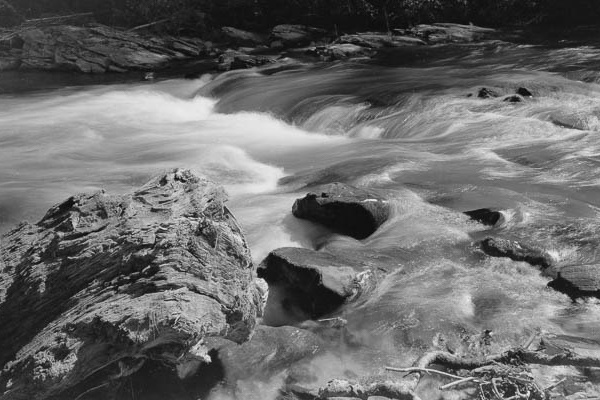
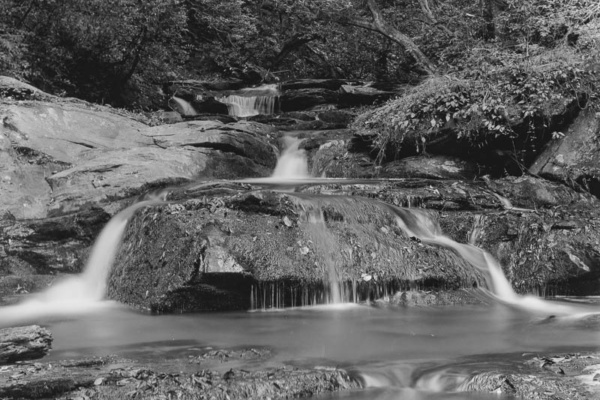
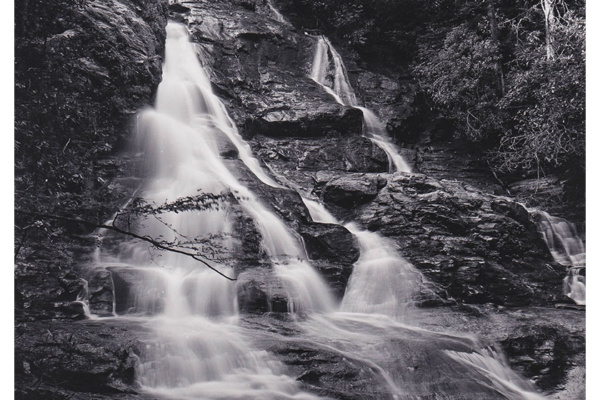
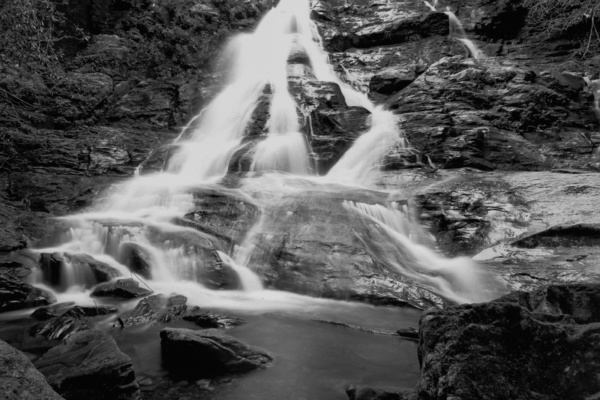
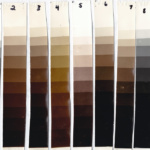 Thiourea Toning Tests Continued
Thiourea Toning Tests Continued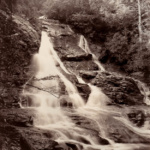 High Shoals Falls Print II
High Shoals Falls Print II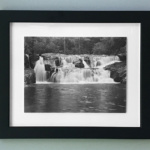 The work avoided
The work avoided
I have been searching for a paper/developer combination that would produce results similar to the old Portriga Rapid (semi-matte surface) and found that the Bergger CD semi-gloss is a close match for surface, but I’m still experimenting with developers and toner. So far, in LPD 1:4, a 2-1/2 minute development with about 2-3 minutes in selenium/Hypo-clear solution of somewhat dubious dilution, gave me something approaching the warmth of the Portriga, but I’m still not there yet. Fully toning in selenium gives a chocolate brown result which looks very similar to Ilford MG warmtone fully toned in selenium which I don’t particularly like. What I’m after is what I would describe as charcoal brown. The real trick is getting rid of the olive tones that seem to plague the lighter areas of the print. I will conduct some more experiments with this expensive paper once my supply is replenished. I’m thinking that maybe if I start with a 1:20 dilution of selenium and sneak up on it, I can pull it out just before the dark areas start to get that chocolate effect and that perhaps I will be happier with the highlight areas.
I think we would all like to see Portriga again. I never had a chance to use it but have read the stories about how special that paper was. Good luck in your search.
Robert, I hope you visit the site again and read part II of my article. I did manage to get that shift away from the flat greenish grey to a warmer charcoal tone by pulling at the point where color shift starts to occur.